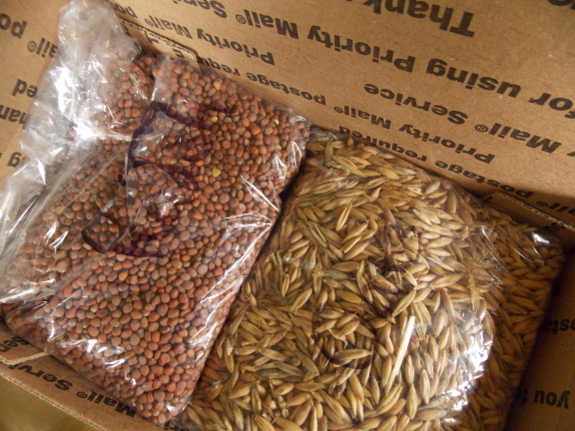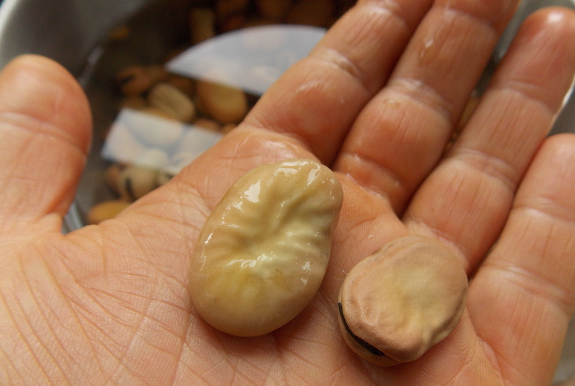
Fall 2014 cover-crop experiments

Even though I'm quite happy with my current cover-crop campaign (explained in depth in Homegrown Humus), there are some gaps I want to fill in both the book and in my own protocols. Time for an experiment!
Part of this year's cover-crop experiment is going to take place off-farm. As with any gardening book, Homegrown Humus
is largely based on my own experiences, which means that people who
live far away may have slightly different results. So I tracked
down ten readers scattered across the U.S. who were willing to accept
free packs of cover-crop seeds in exchange for putting my experiments at
work in their own gardens. Seed packages went in the mail last
week for folks living in zone 5 and colder, while everyone else's seeds
will be mailed out tomorrow. I'm really looking forward to
learning how buckwheat and sunflowers do during "cold" months in the
Deep South and how oats, oilseed radishes, and fava beans fare all over.

"Fava beans?" you may be
saying. "You haven't mentioned that cover crop before." Very
astute of you! In fact, fava beans are the other part of this
year's cover-crop experiment --- trying out a new species for our farm.
I've read a lot about fava-bean cover crops on permaculture blogs, but
the legume seems to be hardy primarily in zones 7 and warmer.
Since we live in zone 6 (and sometimes have nearly zone-5 winters due to
our north-facing hillside), I figured fava beans were out of our
league. But why not push the envelope?
To that end, I soaked Windsor fava bean seeds for speedy germination,
then planted 0.625 pounds in several different locations around the
farm. Soon I'll know if fava beans are worth the high seed price
($12.75 per pound once you factor in shipping), whether they can handle
clayey soil, whether they will survive in waterlogged ground, and
whether they do well when mixed with oats and oilseed radishes.
Stay tuned for updates!
Do
you want to be part of future experiments? I usually post this
type of opportunity to our facebook page, but even if you're already a
fan, facebook might not be showing you our updates. Be sure to
click the like button at the bottom of our posts when you notice them if
you want to be sure to see them on your news feed in the future!
Want more in-depth information? Browse through our books.
Or explore more posts by date or by subject.
About us: Anna Hess and Mark Hamilton spent over a decade living self-sufficiently in the mountains of Virginia before moving north to start over from scratch in the foothills of Ohio. They've experimented with permaculture, no-till gardening, trailersteading, home-based microbusinesses and much more, writing about their adventures in both blogs and books.
Want to be notified when new comments are posted on this page? Click on the RSS button after you add a comment to subscribe to the comment feed, or simply check the box beside "email replies to me" while writing your comment.
- Remove comment
- Remove comment
